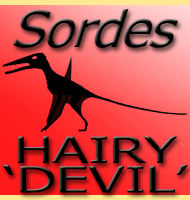Shenzhoupterus
In Depth The toothless beak of Shenzhoupterus is quite characteristic of the azdarchid line of pterosaurs and indicates a potentially carnivorous diet not restricted to fish. The skull of Shenzhoupterus is proportionately deep and the antorbital fenestra is especially large to accomodate this morphology. A convex shaped crest also rose up from the top of … Read more
